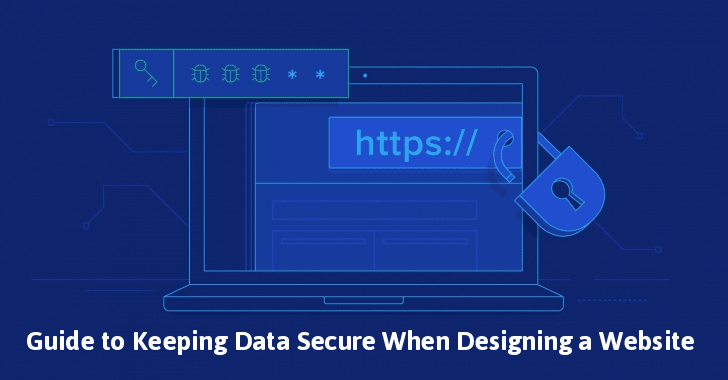The first step for effective web design, as stated in an article by Forbes, is keeping the users in mind. This means creating a useful, fun, and engaging site, but above all, the website must keep users’ private data safe.
Website security and design can sometimes seem to be pursuing distinct aims, with the ultimate aim of design being visual appeal, functionality, and user-friendliness, and that of security is the protection of both site creators and users.
Security can slow down the creative process or interfere with goals such as personalization of the user experience.
However, making security a priority is key if client and user data is to comply with safety regulations.
Advanced planning can ensure that design and data security aren’t two mutually exclusive goals, if not part and parcel of the same quality experience for clients in the long-term.
Security Features Should be Established Early On
The security team should initially lay out a list of must-haves for your company’s page – including aspects such as SSL certificates, secure WordPress plugins, and firewalls, etc.
However, security should also work closely with designers to ensure that Europe’s GDPR and other security regulations are complied with.
Regulations should also cover the way in which data is obtained and stored. As stated by website design agency Presto Web Design, designers will often seek to obtain the maximum amount of information possible from users so as to create a dynamic, personalized, visually appealing experience that will attract and retain customers.
While this is indeed the aim of optimal web design, the latter must adhere to specific security principles. The GDPR, for instance, stipulates that strict privacy principles should rule data collection. Important actions to take include the adoption of end-to-end encryption of data.
Privacy Should Rule
Users’ consent to the obtaining and sharing of information should never be automatic.
They should have to opt into their data being used for specific purposes, and the nature of the data collected should be specifically stated.
Users should also be informed that the data collected will be stored. Data processing can only be collected without consent when it is used for very specific purposes – including compliance with a legal obligation, employee contracts, and ‘legitimate interests’.
For instance, banks can collect the required information to elicit whether or not a client is qualified for a loan, etc.
Separating Tasks
Once security goals are established, an MVC framework (which separates the project into different components) will enable each team to work on their own part of the project, without frequent stops for security checks. MVC works on the principle of parallel development.
Thus, one developer might work on the view while the other works on security. This framework works particularly well for large projects that require the synergy of a large team of developers and designers.
This is because the same components can be used without an interface, so you can format using tools like Macromedia Flash, which allows designers to create interactive features, complex animations, and other features that can significantly boost visual appeal.
Rewarding Users for Sharing Data
Designers and programmers can work together on enhancing the data provision process.
Taking their cue from social networks like Minds and Steemit, for instance, they can experiment with rewarding users with cryptocurrency (or another reward system) for providing valuable data.
Wire’s Andrew McMillen claims that every time users log onto Facebook or Twitter to share information, they are “giving up a piece of themselves” in exchange for very little.
By rewarding users with cash, companies can reap greater rewards while ‘giving back’ the users who are generating content or providing valuable information on a daily basis.
There is an inherent clash between the rigidity of security requirements and the creativity of web designers, but provided teams are clear as to their objectives, they can work seamlessly together.
An MVC framework can help each teamwork on its own tasks, meeting regularly to discuss ideas and developments.
Finally, both security and design team members can brainstorm ways to access data that conforms to privacy regulations while benefiting the companies or institutions to the greatest degree possible.










